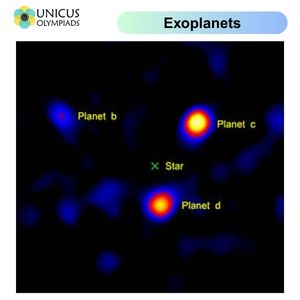

Exoplanets, or extrasolar planets, are planets that exist outside our solar system, orbiting stars other than the Sun. The discovery of exoplanets has revolutionized our understanding of the universe, revealing a vast and diverse array of planetary systems beyond our own. While the first exoplanet was discovered in the early 1990s, advancements in telescope technology and detection methods have allowed astronomers to identify thousands of exoplanets in recent years. This article explores what exoplanets are, how they are discovered, and the techniques used to detect them, along with examples of notable exoplanet discoveries.
Exoplanets are planets that exist outside our solar system and orbit stars other than the Sun. These planets can vary widely in terms of size, composition, and distance from their parent stars. The study of exoplanets is an active area of research in astronomy, as it offers clues about the formation of planetary systems, the potential for life beyond Earth, and the diversity of worlds in the universe.

Exoplanets come in many different shapes and sizes. Some of the major categories of exoplanets include:
Exoplanets are incredibly difficult to detect due to their distance from Earth and the glare of their parent stars. However, astronomers have developed several methods for detecting exoplanets, each with its strengths and limitations. The two most common techniques are the transit method and the radial velocity method, but there are also other methods, such as direct imaging and gravitational microlensing, used for detecting exoplanets.
The transit method is one of the most successful and widely used techniques for detecting exoplanets. It involves observing the dimming of a star’s light as an exoplanet passes in front of it, blocking a small fraction of the star’s light. This is known as a “transit.” By measuring the amount of light blocked and the duration of the transit, astronomers can determine the size, orbital period, and distance of the exoplanet from its star.
The Kepler Space Telescope, launched by NASA in 2009, was designed specifically to use the transit method to find exoplanets. Kepler observed a patch of sky containing more than 150,000 stars and discovered thousands of exoplanets, many of which are Earth-sized or in the “habitable zone,” where conditions might support liquid water. One of the most famous discoveries made by Kepler was Kepler-452b, which is sometimes referred to as “Earth’s cousin” because it is similar in size and orbits a star similar to the Sun.
The radial velocity method, also known as the Doppler method, detects exoplanets by measuring the gravitational influence they have on their parent stars. As an exoplanet orbits its star, the star will move slightly in response to the planet’s gravity. This causes a shift in the star’s spectrum of light, which can be detected using spectrometers. A redshift (moving away) or blueshift (moving toward) in the star’s spectrum indicates that the planet is exerting gravitational pull on the star.
The first exoplanet discovered using the radial velocity method was 51 Pegasi b, discovered in 1995. This exoplanet is a hot Jupiter that orbits its star, 51 Pegasi, in just four days. Its discovery was groundbreaking because it confirmed the existence of exoplanets around other stars and marked the beginning of the modern exoplanet discovery era.
Direct imaging involves capturing images of exoplanets by blocking out the light from their parent stars. This method is challenging because the light from stars is much brighter than the light reflected by the planets. However, advanced instruments like coronagraphs and starshades can help block out the star’s light, allowing astronomers to detect the planets. Direct imaging is most effective for large exoplanets that are far from their stars and emit enough infrared light to be detectable.
In 2015, astronomers successfully captured an image of the exoplanet 51 Eridani b using the Gemini Planet Imager on the Gemini South Telescope in Chile. This was the first direct image of a young exoplanet. The planet, which is about 96 light-years away from Earth, is a gas giant located far from its parent star, making it easier to capture its image.
Gravitational microlensing occurs when the gravitational field of a star or planet bends the light from a more distant background star, acting like a magnifying lens. If an exoplanet is orbiting the star that is causing the lensing, the planet’s gravitational influence can create a detectable signature in the light curve. This method is useful for detecting exoplanets that are far away and are difficult to observe using other techniques.
In 2005, astronomers using the OGLE (Optical Gravitational Lensing Experiment) telescope detected an exoplanet, OGLE-2005-BLG-390Lb, using gravitational microlensing. This planet is located about 20,000 light-years away from Earth, making it one of the most distant exoplanets ever discovered at the time. The planet, which is located in the galactic bulge, is believed to be a Super-Earth, a type of planet that is larger than Earth but smaller than Uranus or Neptune.
The discovery of exoplanets has profound implications for our understanding of the universe and our place within it. Some of the key reasons why exoplanets are important include: